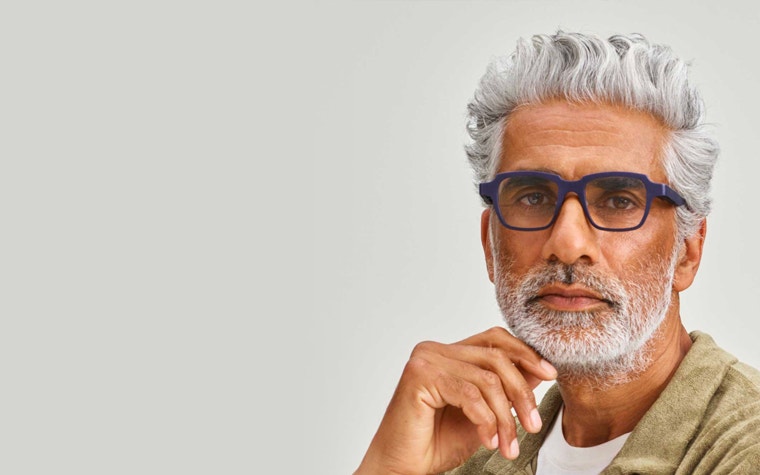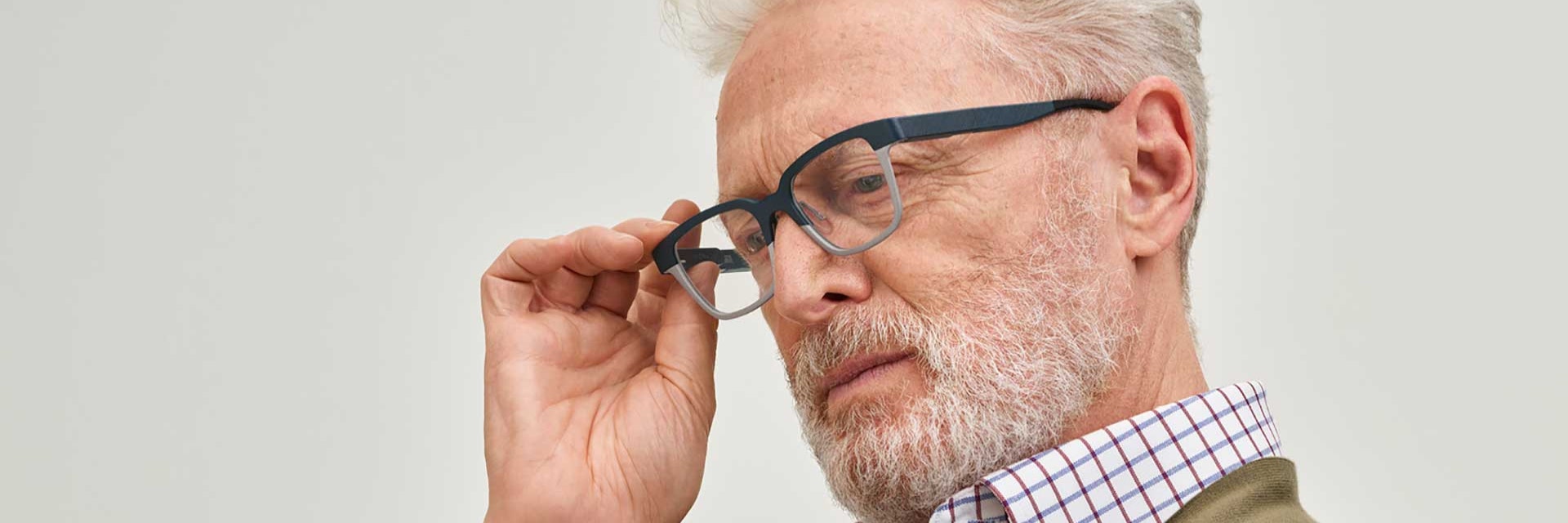CASE STUDY
How 3D Printing Helped Morrow Shape the Future of Eyewear

The smart eyewear industry is driven by two things: function and fashion. For eyewear brand Morrow, balancing the two meant finding a way to combine their cutting-edge autofocal lens with stylish frames the world would want to wear. To do so, they turned to Materialise, counting on the design flexibility and physical performance offered by 3D printing.
Following a 15-year career in technology development at the Interuniversity Microelectronics Centre (IMEC), Paul Marchal, CEO and co-founder of the aptly named Morrow Eyewear, saw a unique opportunity. Using his experience in innovation, he planned to shape the future of an industry and make life a little easier for the nation’s glasses wearers.
For Morrow, the solution was 3D-printed eyewear with a difference. Hidden within the stylish frames are electronics that power a tunable lens. With this combination, those who wear them can change from near to far vision at the push of a button. Launched in Belgium in 2021, these autofocal glasses provide a solid alternative to traditional multifocals and address some of the key challenges customers face. As with any innovation, however, doing so came with challenges of its own.
“Success with smart glasses is not straightforward,” Paul explains. “It’s not enough that the lenses work as outlined. People have to want to wear them. That means accommodating and hiding the electronics so that they appear as any other brand of eyewear — it means marrying aesthetic appeal with optical capability. We could meet this challenge by capitalizing on the design flexibility and physical performance offered by 3D printing.”


Making a difference with 3D printing
The decision to combine their innovative lens with 3D-printed frames was an easy one for Paul and his team. After working on several designs with Belgian design firms, Morrow turned to Materialise. Utilizing their 3D printing expertise, the team helped optimize a lightweight 3D model that could accommodate the electronics and was ready to print at scaleable volumes. Like any start-up, the ability to create and test rapid prototypes was a necessity, but there were also other demands that traditional manufacturing methods would be unable to meet.


“It was a logical decision. We provided Materialise with a lot of high specs, and they performed very well,” says Paul. “In our case, we can’t have any variation. The bevel size and the internal size of the lens need to be exactly the right shape, or the collective won’t work.
“We had to make sure the material was strong enough to not bend and be nice to use. Also, to make sure the colors are correct — you can’t have frames that look different from what you’re showing people. We spent a lot of time on that because it’s not trivial with 3D printing but Materialise has turned it from an art into a science. They have great control over that, and it’s helped us a lot.”


The importance Morrow placed on the aesthetics of their eyewear was not without reason. While they received great feedback from test users on the initial frame, it was only available in one shape and color. They wanted to give consumers more choice by providing additional styles but without the significant financial investment or added risk that comes with carrying multiple SKUs.
More than satisfied with the quality of their first-generation product and knowing that 3D printing would allow them to do so, Paul and the team moved ahead, bringing in some outside expertise for their new-look models.
“We partnered with Bieke Hoet, an eyewear designer with extensive experience in designing for 3D printing,” he explained, speaking on Materialise’s 3DP&Me podcast. “That’s been very successful — we now have more than 168 different frames on our website, available for people to try on. This was only possible through the flexibility of 3D printing.”


The importance of de-risking and customization
While its ability to meet strict technological demands mattered most, choosing 3D printing also helped to benefit Morrow’s bottom line. Being able to print on demand, making only what was required, proved to be both sustainable and economical — key drivers for any start-up.
“One of the key things is that we are in eyewear, and we put vision first. We don’t want to have a big stock of frames, and the shorter the lead time, the better. It allows us to reduce our working capital on the one hand and keep learning what people want and what we can improve on the other. What pleases me even more is that you don’t waste a lot of plastic or throw away 50 or 60% of your inventory at the end of the season.”
Paul also believes that 3D printing and ordering on-demand can help the company take advantage of a changing customer journey in the future. Customization will be key. Rather than printing thousands of different frames to ensure there’s an option that fits everyone, 3D printing allows companies like Morrow to personalize the shape, size, and colors for each customer.
A look to the future
The eyewear brand has undergone some exciting changes in the three years that Morrow and Materialise have worked together. The team has quadrupled in size, moved from an R&D phase to full-on manufacturing, and is making waves in the Belgian market. Undoubtedly, such success — and an even brighter future — lies in part with their willingness to think outside the box, including their choice to use 3D printing. The technology’s ability to blend style with strength, function, and flexibility is crucial to how Paul and his team want to work. The multiple designs now available for customers to choose from are one example of that. It’s an industry that’s sure to grow the more it is developed, something Materialise is happy to help with.
“To me, it’s clear: materials, processes, and software need to be developed specifically for eyewear, not simply applied to it,” says Paul. “That’s one of the reasons we’ve chosen to partner with Materialise. They see that this kind of symbiotic relationship is required. Their work with us, other eyewear designers, and material vendors isn’t just commendable. It’s essential for long-term success in a highly competitive consumer market.”
For now, consumers in Belgium can get their hands on a pair of Morrow eyeglasses by visiting the official website. They’ll even provide an at-home appointment with an optician for a chance to try them out before making a decision.
As for what tomorrow brings for Morrow? It's definitely a journey to keep an eye on.
Share on:
This case study in a few words
Eyewear
3D printing
Design flexibility and physical performance
Create and test rapid prototypes
